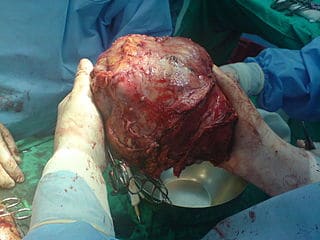Research derived from early national experience of liver transplantation has shown that deceased donor liver transplants offered recipients better survival rates than living donor liver transplants, making them the preferred method of transplantation for most physicians. Now, the first data-driven study in over a decade disputes this notion. Penn Medicine researchers found that living donor transplant outcomes are superior to those found with deceased donors with appropriate donor selection and when surgeries are performed at an experienced center. The research is published this week in the journal Hepatology.
Lead author David Goldberg, MD, MSCE, and colleagues in the Perelman School of Medicine at the University of Pennsylvania examined national transplant data from Organ Procurement and Transplant Network (OPTN)/United Network for Organ Sharing (UNOS) between 2002 to 2012 to compare outcomes in deceased donor transplants with those of living donor liver transplant recipients.
Of the 2,103 living donor transplant and 46,674 deceased donor transplants recipients analyzed, the three-year patient survival rate for deceased donor recipients was 78 percent compared with 83 percent for living donor transplants that were performed at experienced centers. The difference in survival became even greater with longer follow-up, with a five-year survival rate of 71 percent for deceased donor recipients, compared with 78 percent for living donor transplants at an experienced center.
“With a scarcity of organs and an ever growing need, living donor transplants are underused and can alleviate long transplant wait lists while decreasing waiting list mortality, with outcomes that can be as good, and when performed at an experienced center, potentially better for living donor recipients,” says Goldberg. “Every year 20 to 30 percent of patients die waiting for a new liver.”
The team found that those patients with cases complicated by autoimmune hepatitis or cholestatic liver disease had the greatest survival benefit compared with deceased donors when they received a living donor transplant performed at an experienced center.
The paper defined an experienced transplant center as one that had performed at least 15 adult-to-adult living donor liver transplants. There are 36 transplant centers in the U.S. who perform living donor liver transplants, with Penn as one of only 16 to have performed more than 60 adult living donor liver transplants since 2002.
Further, the Penn researchers developed a novel scoring system for living donor transplant recipients that considers several donor and recipient variables to help predict post-transplant outcomes. This score, which requires further validation, can rank recipients in high, intermediate and low-risk groups. They believe risk stratification can help identify optimal donor and recipient matches which can lead to better outcomes and can be used to counsel waitlisted patients considering living donor transplantation. It can also provide objective criteria for donor selection.
Using this, the team found that three-year survival rates for the best matched/lowest risk donor and recipient pairs could be greater than 87 percent and less than 74 percent for the worst-matched/highest-risk group.
“Living donor liver transplantation can be performed at an earlier stage than deceased donor transplantation, before a patient’s clinical condition deteriorates,” says the study’s senior author, Abraham Shaked, MD, PhD, professor of Surgery and director of the Penn Transplant Institute. “Given this, and the superior outcomes, we urge our patients to consider living donor transplantation as the procedure of choice provided they are a suitable candidate for a living donor transplant, have an appropriate donor, and have the procedure performed at an experienced center such as Penn.”
Significant improvement was seen in mortality rates for living donor transplant recipients with the passage of time: the three-year survival rate for living donor recipients was 64 percent in 1999 and had improved to 82 percent by 2008.
“Living donor transplants currently represent just three to four percent of liver transplants,” says Goldberg. “We expect to see a renewed focus on these as surgical techniques and surgical experience with living donor transplants continues to increase, mortality rates improve and greater evidence exists showing the benefit of living donor liver transplant surgeries.”


